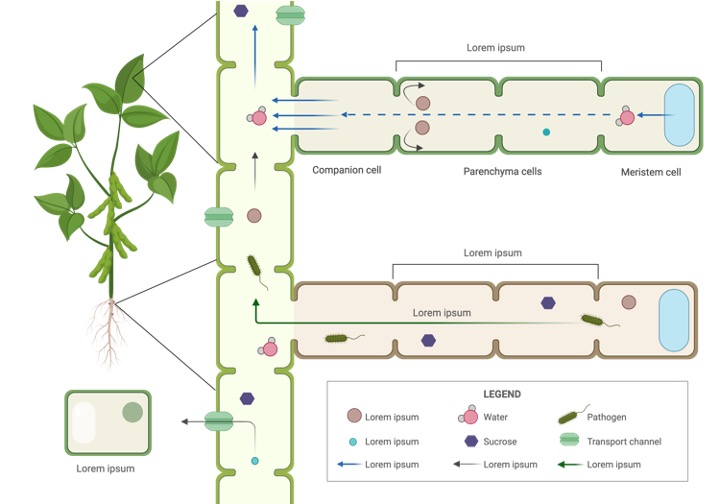Table of Contents
Plant Water Regulation Definition
Plants utilize various mechanisms to regulate water loss. For instance, Swiss cheese plants have holes in their leaves morphology. This peculiar morphology is a water regulation scheme that helps in the spreading of leaves without the need for the expenditure of nutrients or energy.
The plant is autotrophic and the process of photosynthesis is crucial in their survival. Water is required in this process for being employed in photolysis to be split in order to produce electrons. This occurs in the photochemical stage and this stage oxygen is also released. This stage sets start the process for energy acquisition using light energy and are crucial in plant metabolism.
Plants primarily absorb water through their roots from the soil. It is then transported by vessels to other regions of the plant. The roots possess long root hairs that function to increase surface area for water absorption through osmosis.
When the amount of water in roots is less, then the water flows along a concentration gradient from soil to roots. Osmosis also helps in the transport of water within the different regions of plants which ultimately leads to an equal concentration of water in the plant.
Water transport was extensively studied by scientists to understand how it could be transported to great heights against gravity since water molecules were also heavy. The below-given factors play role in the transportation of water.
Root Pressure
It is generated due to unequal water concentration prevailing across the plant. Osmosis will help in the movement of water across different areas till there is an equal concentration of water in the plant.
Capillarity
It occurs due to the force of attraction between various particles. As water is being transported through xylem vessels they stick to their surface area and through osmosis, the water is pushed in the upward direction.

Plant Water Regulation: Transpiration Pull
Transpiration pull is the major factor responsible for water transportation along with the plant. Through stomata, water is transpired in a plant and the water concentration is really low in these regions. By the process of osmosis, the eater will gush into these regions as they have a low concentration causing water loss.
Stomata are important sites of gaseous exchange where CO2 is taken in. CO2 is essential for photosynthesis. Stomata are opened during the day for the intake of CO2 for photosynthesis, but due to this loss of water to the external environment occurs. These stomata openings are formed by guard cells and their sizes alter in response to changes in turgor pressure in these cells.
Turgor pressure is determined by the water concentration in these regions. During low water concentration, the stomata are closed and thus regulating water loss. The rates of transpiration increase during hot days, during the daytime the stomata are open. The water concentration in stomata will go down causing a decline in turgor pressure leading to the closing of the stomata.
This helps in maintain water homeostasis in the plant by regulating water loss. These mechanisms can be observed in mesophytes that obtain only average rainfall and have an average temperature.
Cactus and other Xerophytes live in an extreme environment with scarce availability of water. They have evolved adaptations in the course of time that helps them to survive even in such deserts. These adaptations promote water retention and reduce water loss through transpiration. These mechanisms involve the following:
Curving of Leaves: The leaf is curled such that the transpired water still remains close to the surface of water that aids in altering the water concentration gradient. Due to a greater water concentration adjacent to the leaf, the water will move back into the plant. This also decreases the exposed surface area of leaves. This method of water retention is also employed in modern housing where double insulated walls are employed to decrease rates of diffusion.
Hairy Stomata: It also helps in the retention of water by decreasing water lost to transpiration. Due to adhesive attraction, the water molecules stick to these hairy structures. They work in a similar mechanism to that of leaf curling.
Lower frequency of Stomata: Having few stomatal openings is also a method for water loss regulation. The xerophytic plants exhibit various mechanisms to reduce the loss of water. The plants in regions having a steady flow of rainfall have their roots well spread out for maximum absorption.
Hydrophytes encounter different problems from xerophytes. They require oxygen that is obtained from fluid-filled. Water currents in an aquatic habitat also is a concern for them. Things weigh less in water as compared to the ground.
These plants must have the flexibility to deal with water currents. There is a decrease in xylem tissue in these plants as an evolutionary adaptation as they are not as critical as in terrestrial plants.
Plant Water Regulation Citations
- The importance of nutritional regulation of plant water flux. Oecologia . 2009 Aug;161(1):15-24.
- ABA Transport and Plant Water Stress Responses. Trends Plant Sci . 2018 Jun;23(6):513-522.
- Evolution of the Stomatal Regulation of Plant Water Content. Plant Physiol . 2017 Jun;174(2):639-649.
- Figures are created with BioRender.com







